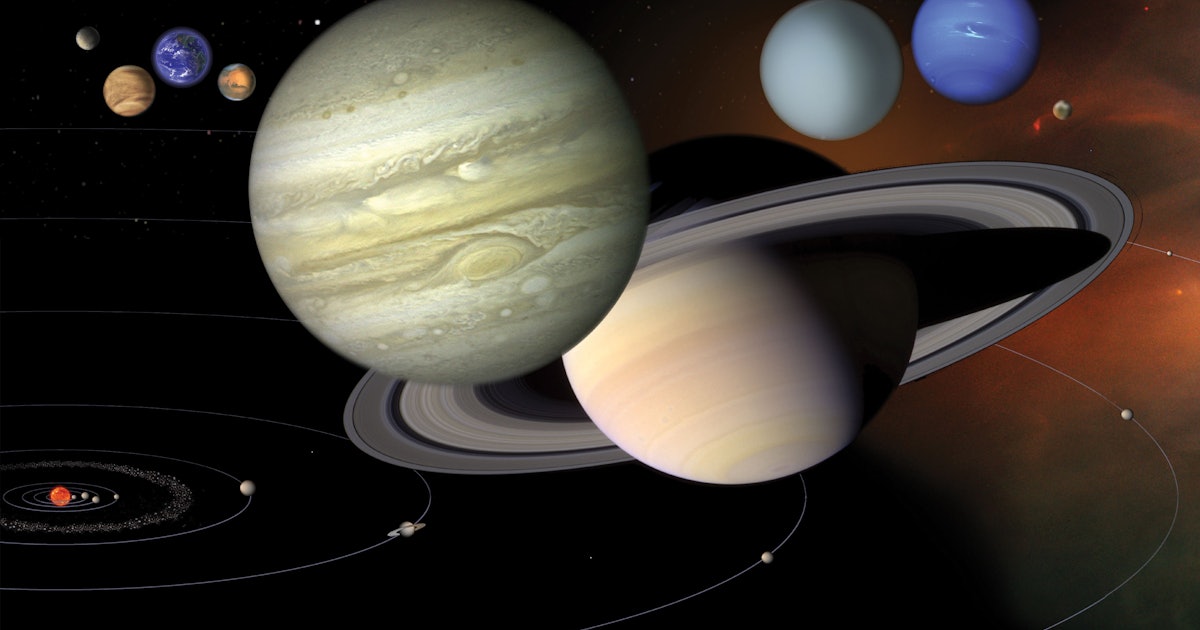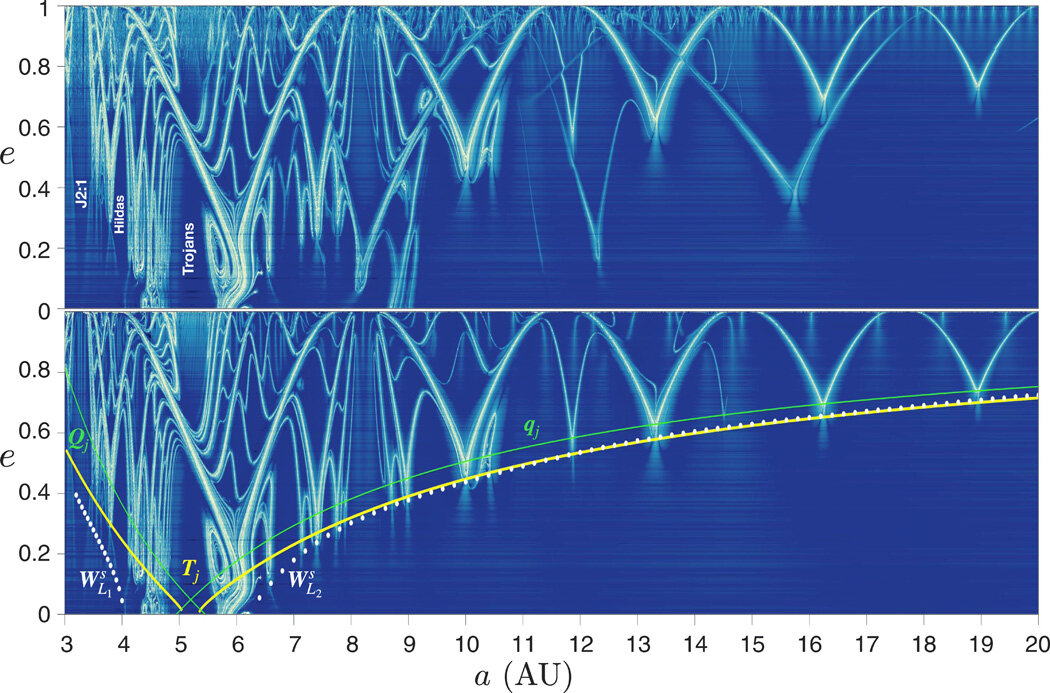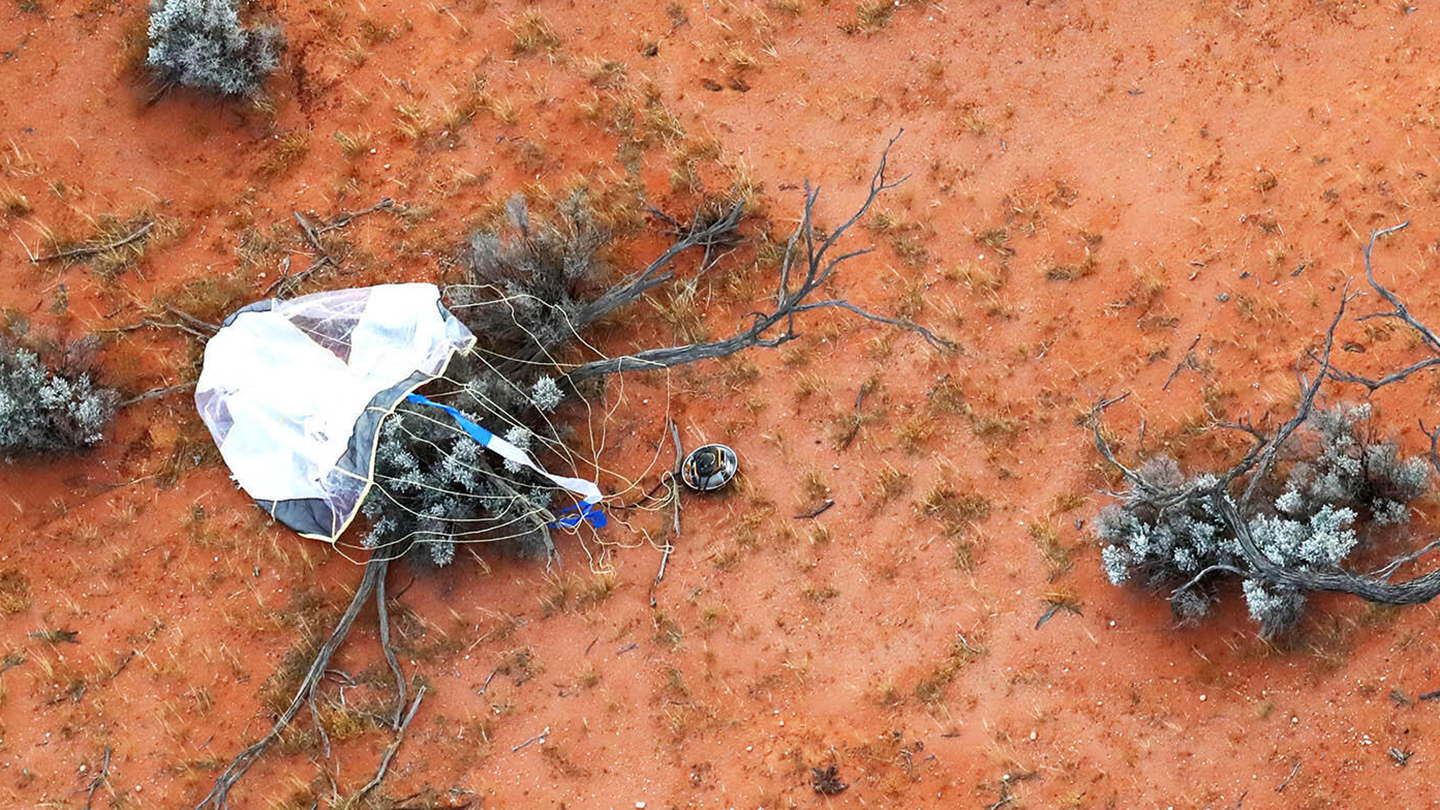![]()
Researchers have discovered a new superhighway network to travel through the Solar System much faster than was previously possible. Such routes can drive comets and asteroids near Jupiter to Neptune's distance in under a decade and to 100 astronomical units in less than a century. They could be used to send spacecraft to the far reaches of our planetary system relatively fast, and to monitor and understand near-Earth objects that might collide with our planet.
In their paper, published in the Nov. 25 issue of Science Advances , the researchers observed the dynamical structure of these routes, forming a connected series of arches inside what's known as space manifolds that extend from the asteroid belt to Uranus and beyond. This newly discovered "celestial autobahn" or "celestial highway" acts over several decades, as opposed to the hundreds of thousands or millions of years that usually characterize Solar System dynamics.
And here's another article:
The center of the Solar System is not where you think — study

For millennia, humans have believed the Earth or the Sun occupied the center of the Solar System, but the truth is the planets and the Sun actually orbit a common center of mass — but no one knows exactly where it is, either.
We are getting closer, though. This year a team of astronomers narrowed in on the center of the entire Solar System within 100 meters — the most precise calculation yet.
INVERSE IS COUNTING DOWN THE 20 MOST UNIVERSE-ALTERING MOMENTS OF 2020. THIS IS NUMBER 18. SEE THE FULL LIST HERE .
Accessing the arches of chaos in the solar system for fast transport

Todorović et al. considered the short-term (100-year) evolution of massless test particles (TPs) located on orbitals between the main asteroid belt and Uranus. They presented the data in dynamic maps based on two widely used orbit integration packages ORBIT9 and REBOUND while developing a force model containing seven major planets from Venus to Neptune as perturbers alongside the Sun/Jupiter/test particle three-body system.
The team computed the FLI (fast Lyapunov indicator) across 100 years for a large grid, where lighter regions represented orbits located on stable manifolds and darker regions represented those away from them. The researchers noted an emergence of a large "V-shaped" chaotic structure connected to a series of arches at increasing heliocentric distances and nearly following the Perihelion line of Jupiter.
Solving a Paradox to Uncover Key Clues About Our Solar System's History

Illustration of solar wind flowing over asteroids in the early solar system. The magnetic field of the solar wind (white line/arrows) magnetizes the asteroid (red arrow). Researchers at the University of Rochester used magnetism to determine, for the first time, when carbonaceous chondrite asteroids first arrived in the inner solar system. Credit: University of Rochester illustration / Michael Osadciw
New clues lead to a better understanding of the evolution of the solar system and the origin of Earth as a habitable planet.
While you're here, how about this:
Exoplanet around distant star resembles reputed 'Planet Nine' in our solar system: Astronomers
![]()
Astronomers are still searching for a hypothetical "Planet Nine" in the distant reaches of our solar system, but an exoplanet 336 light years from Earth is looking more and more like the Planet Nine of its star system .
Planet Nine, potentially 10 times the size of Earth and orbiting far beyond Neptune in a highly eccentric orbit about the sun, was proposed in 2012 to explain perturbations in the orbits of dwarf planets just beyond Neptune's orbit, so-called detached Kuiper Belt objects. It has yet to be found, if it exists.
New gravitational 'superhighway' system is discovered in the Solar System | Daily Mail Online

A new 'superhighway' network running through the Solar System has been discovered by astronomers, and it could speed up space travel in the future.
Researchers from the University of California San Diego looked at the orbits of millions of bodies in our Solar System and computed how they fit together and interact.
The highways allow objects to move through space much faster than previously thought possible – for example, travelling between Jupiter and Neptune in under a decade.
Researchers uncover key clues about the solar system's history: New clues lead to a better
![]()
"There is special interest in defining this history -- in reference to the huge number of exoplanet discoveries -- to deduce whether events might have been similar or different in exo-solar systems," says John Tarduno, the William R. Kenan, Jr., Professor in the Department of Earth and Environmental Sciences and dean of research for Arts, Sciences & Engineering at Rochester. "This is another component of the search for other habitable planets."
* * *
Some meteorites are pieces of debris from outer space objects such as asteroids. After breaking apart from their "parent bodies," these pieces are able to survive passing through the atmosphere and eventually hit the surface of a planet or moon.
Hayabusa2's asteroid dirt may hold clues to the early solar system | Science News

For the first time, scientists are about to get their (carefully gloved) hands on asteroid dirt so old it may contain clues to how our solar system formed and how water got to Earth.
A capsule containing two smidgens of dirt from asteroid Ryugu arrived in Japan on December 7, where researchers will finally get a chance to measure how much was collected. The goal of Japan's Hayabusa2 mission was to collect at least 100 milligrams of both surface and subsurface material, and send it back to Earth.
No comments:
Post a Comment